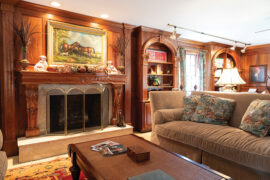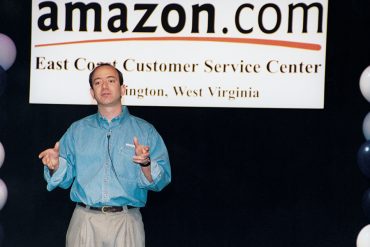The most significant news events in the region from the last 152 years, as selected by our readers.
By James E. Casto
HQ 124 | WINTER 2024
In today’s world the news cycle runs on a continuous loop 24 hours a day. Our televisions inform us of breaking news alerts, weather warnings, the latest sports scores and more. The internet provides endless options to stay abreast of current events, from social media to blogs to podcasts. Even our telephones can be programmed to chime when a major news story breaks.
There was a time when Huntingtonians only received their news from three sources: newspaper, radio and television. If residents wanted to know about an approaching storm, the latest Marshall football score or a local fire, most had to rely on the evening news or the next edition of the newspaper.
Looking back at the 152 years since Huntington was founded, we decided to ask our readers what news stories stand out most in their minds. The following is their list presented in chronological order. Some news is good, some bad and some tragic. Nevertheless, these are some of the stories that have defined this region since 1871.
The Huntington Mall Opens
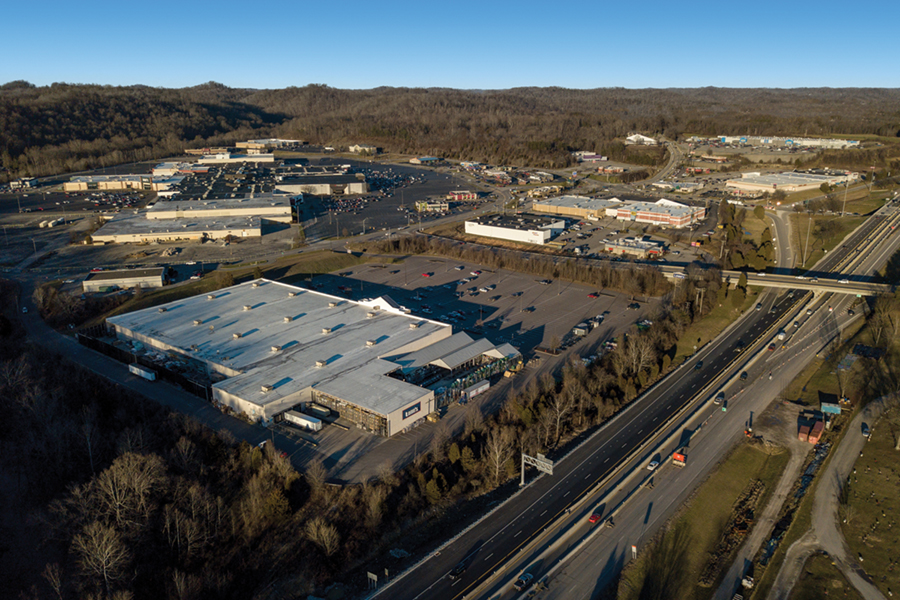
In the 1970s, various plans were offered for locating a large retail and entertainment complex in downtown Huntington on property cleared by the city’s ambitious urban renewal project. None of the plans made it off the drawing board. Similarly, a proposal to build a shopping mall near the Hal Greer Boulevard interchange with Interstate 64 failed to materialize.
Ultimately Huntington got a big mall, but it was located a goodly way beyond the city limits. Built by the Cafaro Company of Youngstown, Ohio, the Huntington Mall opened in Barboursville on Feb. 3, 1981.
In the years since, it has seen its ups and downs, with retailers coming and going. But with more than 100 businesses, it remains the biggest and busiest mall in West Virginia. Its impact on the region can only be described as tremendous.
When the Huntington Mall was built, the only other businesses around it were two bars and an Exxon gas station. Since the mall’s opening, several businesses have built around the mall, including four motels and multiple restaurants, as well as a Walmart Supercenter, the first Best Buy in West Virginia and the first Sheetz gas station/convenience store in southern West Virginia.
In recent years, the Huntington Mall has averaged $375 million a year in retail sales and significantly increased the annual tax revenues for the Village of Barboursville.
Now something new is coming to the Huntington Mall. Construction is underway on a career and technical center where the now-closed Sears store was located.
The Huntington Mall Rapes
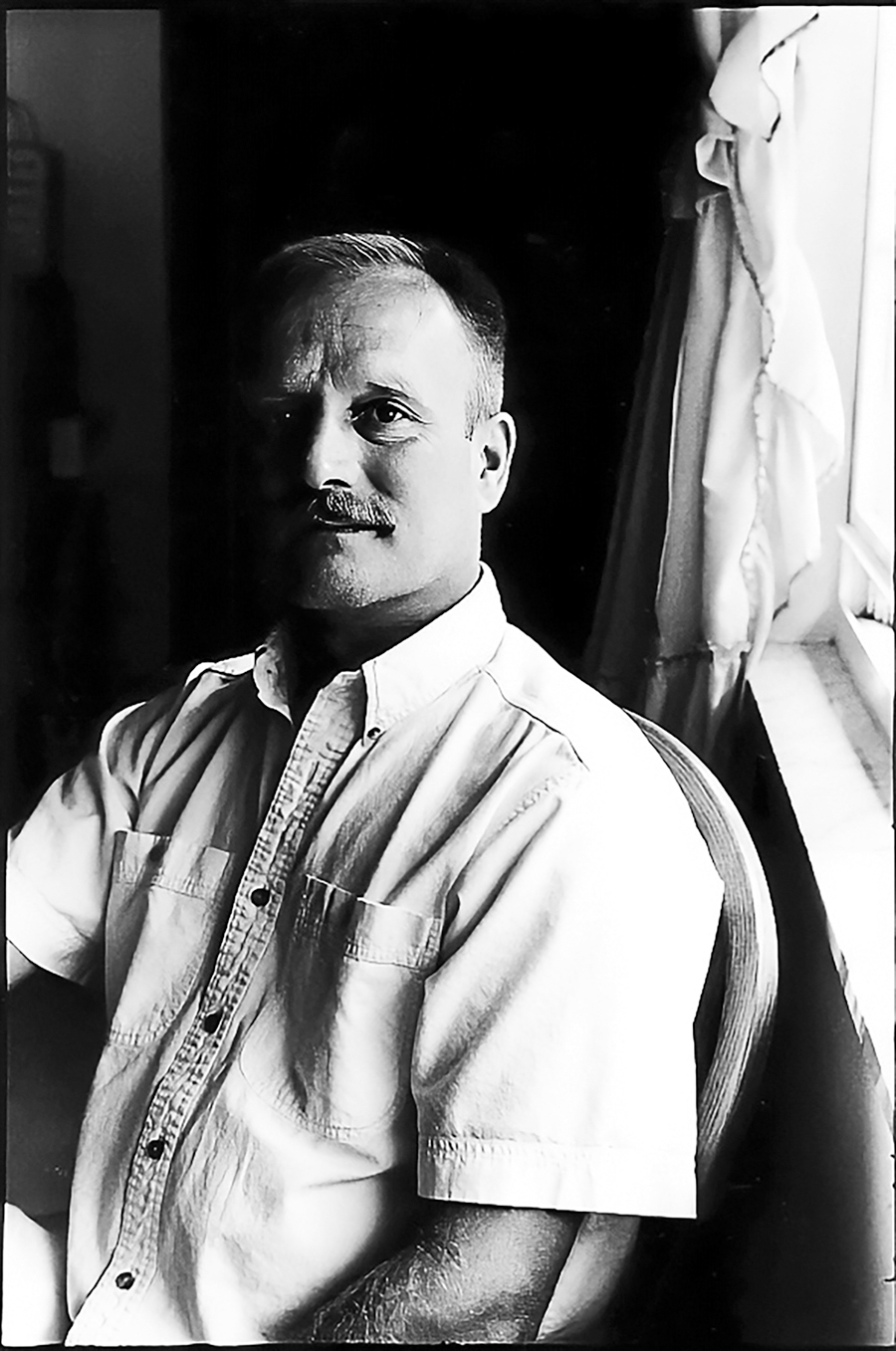
In the winter of 1987, two women who worked at the Huntington Mall told police they were abducted from the mall parking lot, driven to a secluded area and raped. The disturbing news shocked mall shoppers and workers for weeks and led to one man’s wrongful conviction.
Local cemetery worker Glen Dale Woodall was arrested, convicted of the two rapes and sentenced to 335 years in prison. Woodall served nearly five years in prison before DNA evidence showed that he was innocent of the crimes and his conviction was overturned. He sued the state and later was awarded a $1 million settlement.
Twenty-three years later, authorities announced they were bringing charges in the case against another West Virginia prison inmate. New DNA evidence had produced enough evidence to charge Donald Eugene Evans, who had been convicted in the slaying of another man.
Woodall’s case was one of several where Fred Zain, a forensic technician at the West Virginia State Police lab, was accused of falsifying serology results to obtain convictions. Zain was charged with fraud but died of liver cancer before he could be brought to trial.
Marshall Wins NCAA I-AA National Championship

Prior to 1992, Marshall University had never won an NCAA national championship in any sport. But that year, head football coach Jim Donnan led the Thundering Herd to the NCAA I-AA national championship game against Jim Tressel’s Youngstown State Penguins, who had defeated the Herd the prior year 25-17 in the finals. The 1992 rematch in Huntington saw Marshall, led by quarterback Michael Payton, running back Chris Parker, wide receiver Troy Brown and tight end Mike Bartram, jump out to a 28-0 lead in the third quarter. But the Penguins came storming back to tie the game 28-28 with just 2:28 left in the fourth quarter.
Payton then calmly led his high-powered offense down the field to the Penguins’ 19-yard line. With just seven seconds showing on the clock, an unlikely hero emerged: a walk-on senior named Willy Merrick, who had never kicked a field goal in his college career. Donnan was forced to call on the perennial benchwarmer because the team’s starting kicker had been suspended the night before. Merrick took the field, and in front of 31,304 fans at Marshall Stadium and a national audience watching on CBS television, his kick somehow managed to split the uprights. The field goal culminated the most emotional game at Marshall since the 1971 last-second victory over Xavier, the Herd’s first after the Nov. 14, 1970, plane crash.
Ashland Oil Leaves Region
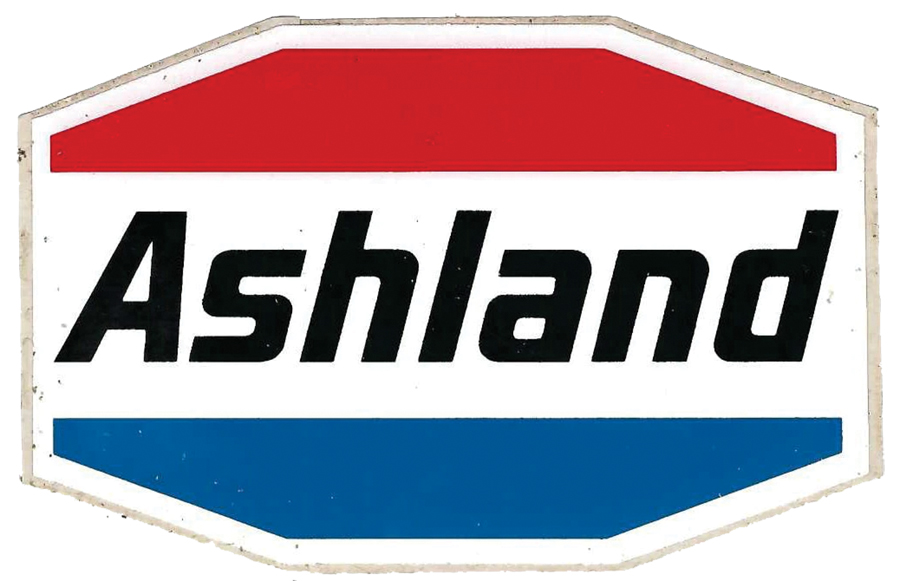
From its beginnings in eastern Kentucky in 1924 when it purchased a small refinery, the company that grew to become Ashland Oil expanded into all kinds of petroleum products, as well as the marketing and transportation of those products. Later it diversified into coal mining, chemicals, road construction and other businesses.
For decades, Ashland Oil was headquartered in Ashland, Kentucky. With its busy refinery in Catlettsburg and its headquarters in Ashland, the company was a familiar part of life in the Tri-State.
In 1999, people in Ashland were stunned when the company announced it was relocating its longtime corporate headquarters from Ashland to Covington, Kentucky, near the Cincinnati International Airport.
About the same time, Ashland Oil and Marathon Petroleum merged, with Marathon essentially gobbling up the Kentucky company. The Huntington area had long been dotted with Ashland Oil service stations, displaying their distinctive “Flying Octanes” signs. After the merger, the Ashland signs quickly came down, replaced by Marathon signs.
The move of the Ashland Oil headquarters cost the region hundreds of jobs and millions of dollars. The move brought other major losses due to the significant role the company had long played in the region, helping fund many civic, business and cultural ventures.
The Catlettsburg refinery remains, now a Marathon facility. But all other traces of Ashland Oil are gone.
Pullman Square Opens

The construction of Pullman Square, with its busy shops, restaurants and multiscreen movie theater, opened an exciting new chapter for Huntington — and finally brought an end to the marathon saga of redeveloping the city’s downtown.
In the 1960s and ’70s, many cities embarked on urban renewal projects aimed at reshaping their downtowns. The Huntington Urban Renewal Authority joined that trend in a big way when it acquired and leveled much of the city’s downtown.
The downtown makeover spawned a number of notable projects, including a new Cabell County Public Library, a new building for the First Huntington National Bank (today’s J.P. Morgan Chase), a new Red Cross Center and Harris Riverfront Park, among others.
But a site envisioned as the centerpiece of the revamped downtown — four square blocks bounded by Eighth Street, the north side of Third Avenue, 10th Street and Veterans Memorial Boulevard — would remain a weed-infested parking lot for decades, defying all efforts to develop it. Plan after plan was boldly announced — and then went nowhere.
That being the case, many people found it difficult to get excited when, in the late 1990s, Mayor Jean Dean, Tri-State Transit Authority General Manager Vickie Shaffer and others began talking about a new plan for the long-vacant property.
But this time the talk was translated into action. From the first, the vision for what became Pullman Square was that it would resemble an old-time small town and would fit within the historic context of the existing downtown Huntington. And from the outset, there was an unprecedented level of cooperation between local, state and federal government and Metropolitan Partners, the project’s Columbus-based developer. That cooperation paid off spectacularly in 2004 when Pullman Square opened.
Hollywood Announces “We Are Marshall” Motion Picture
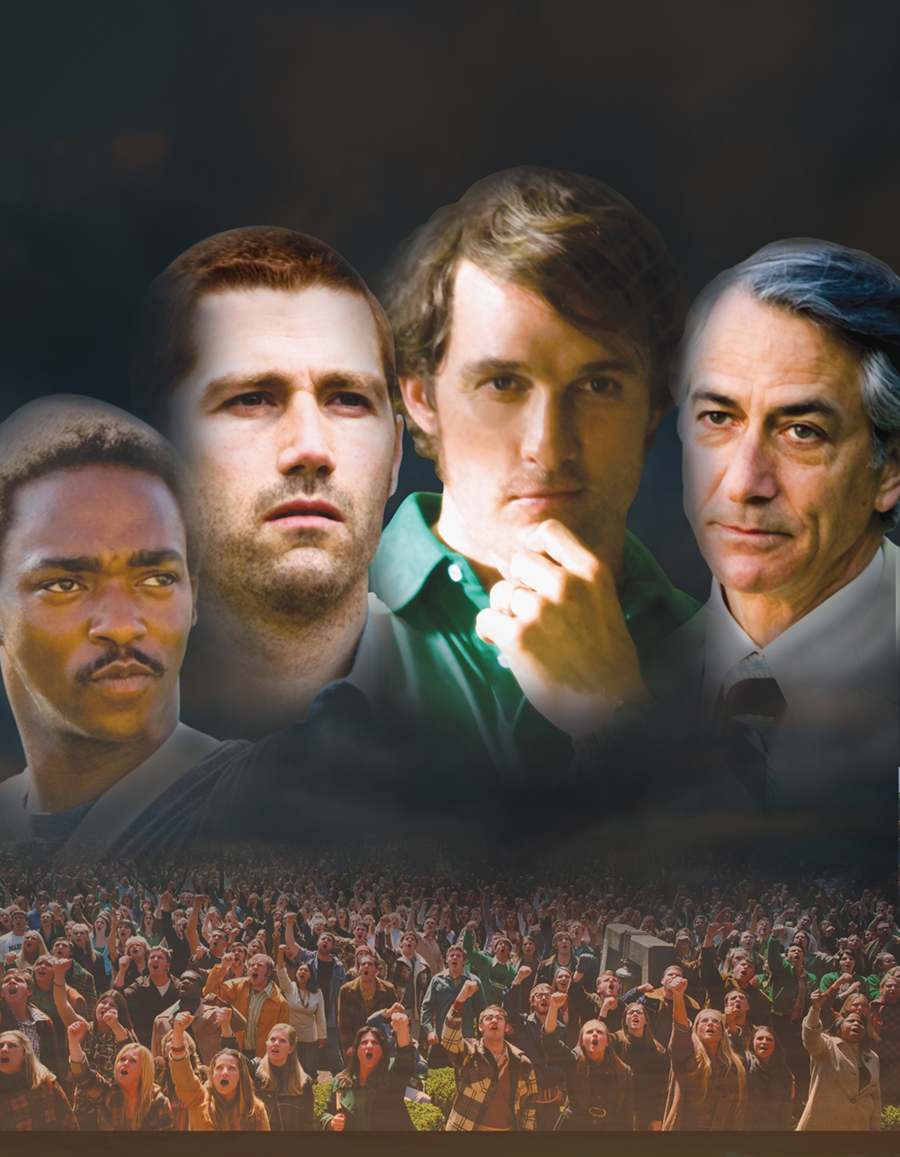
On Jan. 30, 2006, Huntington residents learned that Hollywood would be making a major motion picture about the Marshall plane crash. Warner Bros. announced plans to produce We Are Marshall about the Nov. 14, 1970, tragedy that claimed the lives of 75 people, including most of the Marshall football team, and the miraculous, emotional recovery of the university and community that followed.
The Hollywood studio had a script written by Jamie Linden, a 2001 Florida State University alumnus who had learned about the crash while reading a story in his school newspaper. In addition, a producer had been selected in Basil Iwanyk, and the director of the film would be Joseph McGinty Nichol, known professionally as McG. Interest in the film ballooned when cast and crewmembers were announced, one at a time. Matthew McConaughey, People Magazine’s “Sexiest Man Alive,” was chosen to play Jack Lengyel, coach of the Young Thundering Herd. He was joined by Matthew Fox from ABC’s Lost, Oscar nominee David Strathairn and Ian McShane from Deadwood, among others. Filming would begin in Huntington on Monday, April 3, and continue for three weeks.
The city threw a huge block party on Saturday, April 1, to welcome the filmmakers to Huntington. The event took place in front of the Keith-Albee Theatre and drew thousands of people. To their delight, McG and McConaughey greeted the shoulder-to-shoulder, camera-toting fans from a stage and joined in chilling shouts of “We Are … Marshall!”
The Emmons Apartments Fire

Given his far-flung business interests, rail tycoon Collis P. Huntington could spend little time in the new town he founded in 1871 as the western terminus of his Chesapeake & Ohio Railway. He needed someone he could put in charge in his absence. He found that man in his brother-in-law, Delos W. Emmons, who had married Huntington’s sister Mary.
It was Emmons who oversaw the sale of the first lots sold in the new town. He was elected to the first City Council, served on a committee to build the city’s first schools and was a director of the newly organized Bank of Huntington.
Three of his sons played significant roles in the city’s early history. Carlton Emmons was a partner in the Emmons & Hawkins Hardware Co., for many years the largest wholesale hardware business in West Virginia. J. Alden “Ollie” Emmons ran a furniture factory and in 1890 was elected an officer of the Huntington Board of Trade, a predecessor of the Huntington Chamber of Commerce.
But it was Arthur S. Emmons who left the most visible stamp on the city when he built the two-building Emmons Apartments complex at Third Avenue and 12th Street. The Emmons Senior was erected in 1910 and the adjacent Emmons Junior in 1924. The two buildings once were considered the premier apartments in the city.
On Jan. 13, 2007, when a fire started in a closet at the Emmons Junior, flames quickly raced through the building and spread to the Emmons Senior. One of the worst fires in the city’s history, the blaze claimed the lives of nine people. The two buildings were damaged beyond repair and were demolished. Today, the site of the apartments remains a vacant lot.
Huntington Wins America’s Best Communities Competition

On April 19, 2007, it was announced that Huntington had won the title of “America’s Best Community” in a nationwide contest sponsored by Frontier Communications, DISH Network, CoBank and The Weather Channel. The contest spanned three years and challenged small towns and cities throughout the country to develop innovative ideas for economic revitalization.
Huntington beat out 352 other communities to claim the grand prize of $3 million. The money would be used to begin funding the Huntington Innovation Project (HIP), an ongoing revitalization plan focused on four neighborhoods in the city. The project includes the Highlawn Brownfields Innovation Zone, which is redeveloping vacant industrial buildings along the Ohio River; the Fairfield Innovation Corridor, which is revamping the neighborhoods around Hal Greer Boulevard including replacing dilapidated housing with residential and commercial buildings; the West End River-to-Rail Revitalization, which focuses on improving the West End and Central City; and Gigabit City, which plans to connect all of Huntington with high-speed broadband.
“We’re going to use this $3 million to attract $260 million or more,” said Mayor Steve Williams. “The $3 million is a lot of money, but eventually the money will be spent, and the trophy will be tarnished. What we’re doing is transforming our region for the next 50 years.”
Cabell Huntington Acquires St. Mary’s
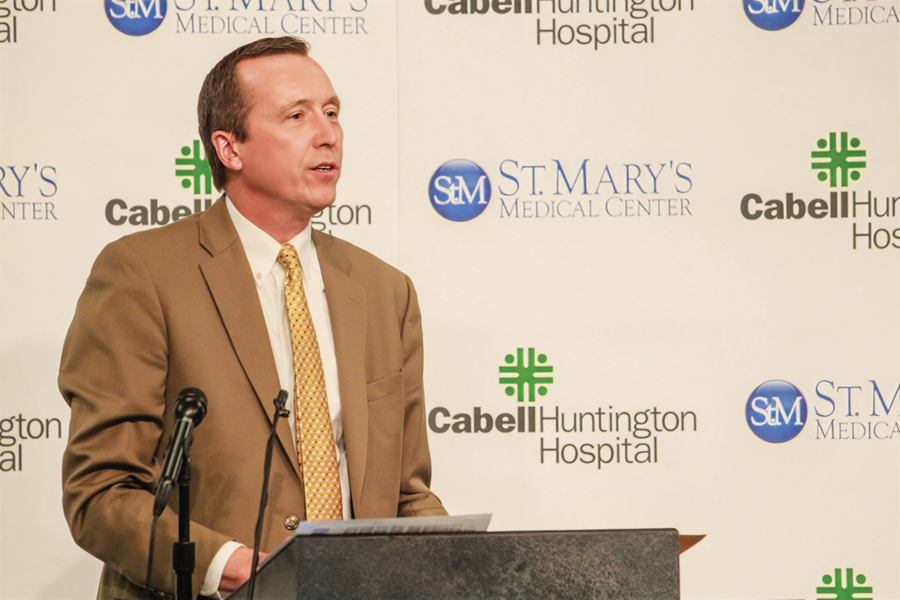
In 2018, the long-pending acquisition of St. Mary’s Medical Center by Cabell Huntington Hospital was finalized. Dr. Kevin Yingling, then the chairman of the Cabell Huntington board of directors, told a news conference that Cabell Huntington had completed the final steps of financing and paperwork to complete the acquisition of St. Mary’s. It marked the end of a lengthy process that started in 2014.
“Today is a historic day that we will reflect on for decades,” Yingling said. “Throughout the nearly four-year quest, members of the medical community, business community and community at large have maintained the vision of creating a medical system that benefits the community by improving quality, access and affordability.”
“Due to the declining number of sisters in our community, we are no longer able to continue our health care ministry,” said Sister Mary Grace Barile, provincial of the Pallottine Missionary Sisters at St. Mary’s. “We are transferring the leadership of our health care ministry to Cabell Huntington Hospital for the benefit of the community and the patients we both serve. We are excited about the benefit the community and patients will experience with this transaction.”
St. Mary’s President and CEO Mike Sellards said he was pleased that the transaction had finally been completed.
“Cabell is the right choice for the community, the right choice for our employees and our physicians and, more importantly, the right choice for our patients,” he said.
The merger agreement stipulated that both hospitals would retain their individual identities, but jointly the two would become members of the Mountain Health Network, which was later renamed the Marshall Health Network.
Brad Smith Named Marshall President
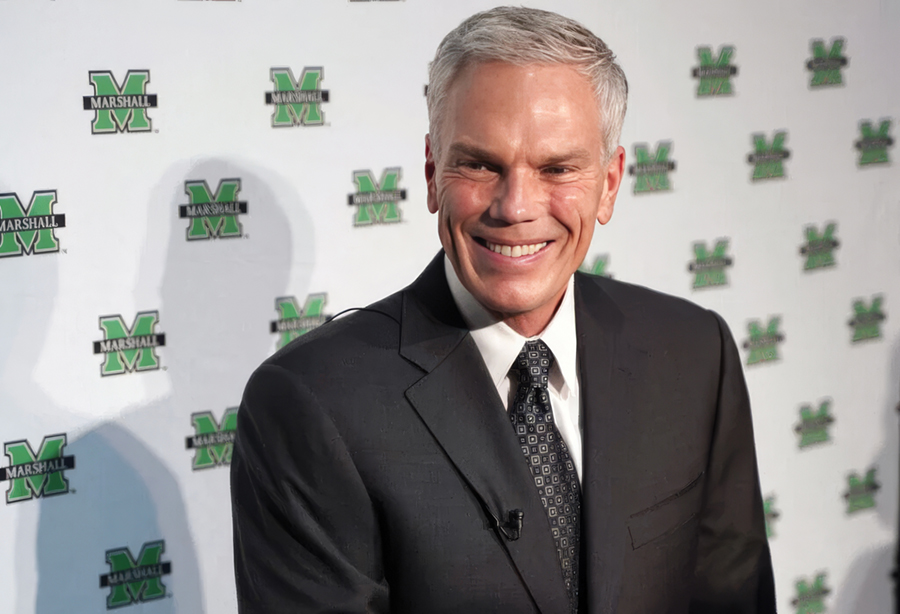
On Oct. 28, 2021, the Marshall University Board of Governors voted unanimously to name alumnus Brad D. Smith the school’s 38th president. Smith became the first Marshall alumnus and Huntington-area native to lead the university on a full-time basis. What’s more, he became the first Fortune 500 CEO to lead an American university. To some, the choice was unconventional because Smith doesn’t hail from academia. To others, it was the smartest move the school has ever made.
“Brad Smith is undoubtedly the right person at the right place and at the right time to lead Marshall University as our next president,” said Patrick Farrell, chairman of the Board of Governors.
As the former CEO of Silicon Valley software giant Intuit, Smith certainly brings a unique skill set to the post. He is a proven executive, having run a $6 billion company with 11,000 employees worldwide. His leadership style earned him numerous accolades. Fortune ranked him No. 6 on its list of Top CEOs in the United States, and Forbes ranked him No. 15 on its list of “America’s Most Innovative Leaders.” Under his 11-year tenure, Intuit’s stock value increased by 626%. Smith has powerful contacts around the world and has rubbed elbows with the CEOs at Apple, Google, eBay, Hewlett-Packard and more. He currently sits on the board of directors at Nordstrom and Amazon. He understands the importance of marketing and has worked with some of the most well-respected ad agencies in America.
“This is a historic time in Marshall’s history,” said Kathy D’Antoni, a member of the Board of Governors. “We have a nationally acclaimed business leader, a Marshall alumnus and a West Virginia native returning home to give back to the community where he was raised.”



